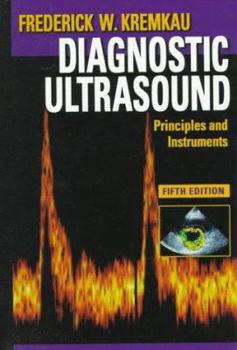Diagnostic Ultrasound: Principles and Instruments
Select Format
Select Condition 
Book Overview
A market leader and a highly respected reference, this text explains how diagnostic ultrasound works and helps readers scan safely, properly handle artifacts, evaluate instrument performance, and... This description may be from another edition of this product.
Format:Hardcover
Language:English
ISBN:0721671438
ISBN13:9780721671437
Release Date:January 1997
Publisher:W B Saunders Co
Length:590 Pages
Weight:2.30 lbs.
Dimensions:9.5" x 6.5" x 1.3"
Customer Reviews
5 ratings
Kremkau
Published by Thriftbooks.com User , 16 years ago
The product was in perfect condition, shipped free, and was about $15.oo cheaper than other stores locally! I love it!
Kremkau
Published by Thriftbooks.com User , 17 years ago
Diagnostic Ultrasound: Principles and Instruments (Diagnostic Ultrasound: Principles & Instruments (Kremkau)) As promised---Quick ship!!
Great book for sonographers! thanks
Published by Thriftbooks.com User , 18 years ago
The book is a basik and almost only book to study sonography principals. it was in great condition. thanks
Great to have a clear concept of Ultrasound Physics
Published by Thriftbooks.com User , 23 years ago
I found this book very understandable and easy in the sense that it describes most of the physical principles in detail and with equation which some other authors lack. Though it's not so easy to read at once or showing not only definations but also descriptions of topics which makes it more to understand instead of just memorizing the things and that is the most important thing I found in it
An introductory textbook on medical ultrasound
Published by Thriftbooks.com User , 24 years ago
I actually came across Professor Kremkau's textbook accidentally, when I was looking for some not too dated text on the physics of medical ultrasound. Although it was obviously aimed at a practicing ultrasonographer preparing for some ARDMS or ARRT exam rather than a physicist trying to brush up his knowledge of medical ultrasound, it proved to be a valuable source of relatively recent information on the current state of the area.The textbook starts with an overview of the basic physics of waves and ultrasound, proceeds to the transducers and beam shape, and continues to the computer technology used for imaging. Next comes a chapter on the Doppler effect, being followed by a discussion on spectral analysis. A synthesis of these two techniques is the color Doppler imaging, and an entire chapter is devoted on the recent techniques like Color Doppler and Color Power Doppler. The textbook is concluded by a chapter discussing the artifacts, and finally a chapter on performance and safety.The style is highly readable, although the text is somewhat repetitive. One striking observation - for a physicist at least - is that professor Kremkau denies the efforts spent in inventing a readable representation of mathematical relations over the past 500 years or so, and has invented his own system. So instead of the usual "wavelength equals propagation speed divided by frequency" written in mathematical symbols, we see frames like "frequency UP, wavelength DOWN" throughout the book. Strange, and probably not particularly efficient.Each chapter is accompanied by a list of over 100 questions, and the answers are provided at the end of the book after the summary chapter. Each chapter also contains a small handy glossary. The book is lavishly illustrated and has a useful index, while the list of references is not particularly impressive.






